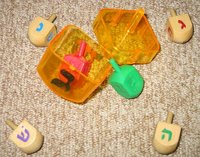At Kanokita, where the kids have no appetite for learning, Mr. Mochizuki passed the buck to me to answer more interviewing-the-foreigner questions to eat up class time. “How to celebrate Christmas in your home country” was first on a handwritten ditto entitled: “Let’s Enjoy!!! Mr. Jef retraces himself.”
Mr. Jef introduced the subject with skilled drawings in colored chalk. Students recognized the ornamented Christmas tree and gift-wrapped presents beneath it. So far, so good. But confusion ensued when they identified sleigh-riding Santa as a snowman. To clarify, I sketched a chimney and fireplace, and added directional arrows showing Santa’s path from the sleigh down the chimney to deliver presents under the tree. But further explanation was needed. The fireplace mantle was not adorned with a plate of rice crackers or pizza. The glass was not filled with coffee, juice, champagne, shochu or sake.
One dark Tuesday, I regurgitated this 50-minute lesson four times in a row. My holiday spirit soured by the fourth class. I lit the fireplace logs and redrew a cross-section of the chimney with a bulge and dangling legs. Poor Santa. While Mr. Mochizuki translated, I fanned the flames, which shot up and singed Saint Nick and ignited the “Christmas socks” hanging from the mantle. Soon, tree tinsel was ablaze. Some boys were giggling. I wasn’t taking any prisoners this holiday season.
I drew a reindeer. The girls whimpered upon learning that I had eaten one (yes, a kebab in Finland). Shock turned to horror as I drove home the point by sketching Rudolph’s forehead with a bite removed. I sliced open the body to add entrails spilling out in hastily rendered chalk. The bell shook me from my trance. The boys were still giggling. The girls hung their heads. I hung mine. What had I turned into?
That the day has religious roots was news to some. A few were surprised to learn that it marks Christ’s birthday, not Santa’s. One asked, "how old?" While Christmas is secularly celebrated in Japan, I sensed an opportunity to convert young minds to the joys of a new holiday. Not just one day of presents – but eight!  “Happy Chanukah!” I wrote on the board, emphasizing the guttural “ch.” Giggling resumed. “Hadaka?” one snickered. My religion’s holiday unfortunately sounds like the Japanese word for “naked.” I handed out a printout with images of menorahs, gelt and dreidels.
“Happy Chanukah!” I wrote on the board, emphasizing the guttural “ch.” Giggling resumed. “Hadaka?” one snickered. My religion’s holiday unfortunately sounds like the Japanese word for “naked.” I handed out a printout with images of menorahs, gelt and dreidels.
“Chocolate money [gelt] is delicious!” I cried, rubbing my tummy, hoping to jumpstart the class. Okay, Plan B: break out the games. “Do you know dreidel?” Someone echoed “jello,” another “judo.” For the 7th graders, I simplified the lesson into a Christmas dreidel game, dispensing with the whole Jewish thing altogether. The capacity of 13 year-olds to absorb a foreign topic in a foreign language is quite limited.
I divided each class into five groups, and distributed a dreidel to each. Familiar with Japanese koma counterparts, they only needed about 30 seconds of practice. Advanced dreidelers spun them upside down or on their foreheads.
I quickly switched  to the competition phase where one member of each group spun his or her dreidel on the floor. The last one standing earned a pencil. Everyone gathered around to watch; students instantly took a liking to the Jewish koma game.
to the competition phase where one member of each group spun his or her dreidel on the floor. The last one standing earned a pencil. Everyone gathered around to watch; students instantly took a liking to the Jewish koma game.
The release from textbooks, excitement of competition and promise of prizes turned class into a festive atmosphere. After the games, we merrily sang the dreidel song until time expired. Hook, line and sinker.
Wednesday, December 21, 2005
A Very Jewish Christmas
Posted by
ジェフリー
at
10:45 AM
![]()
Labels: Kanokita, teaching (general)
Subscribe to:
Post Comments (Atom)



No comments:
Post a Comment